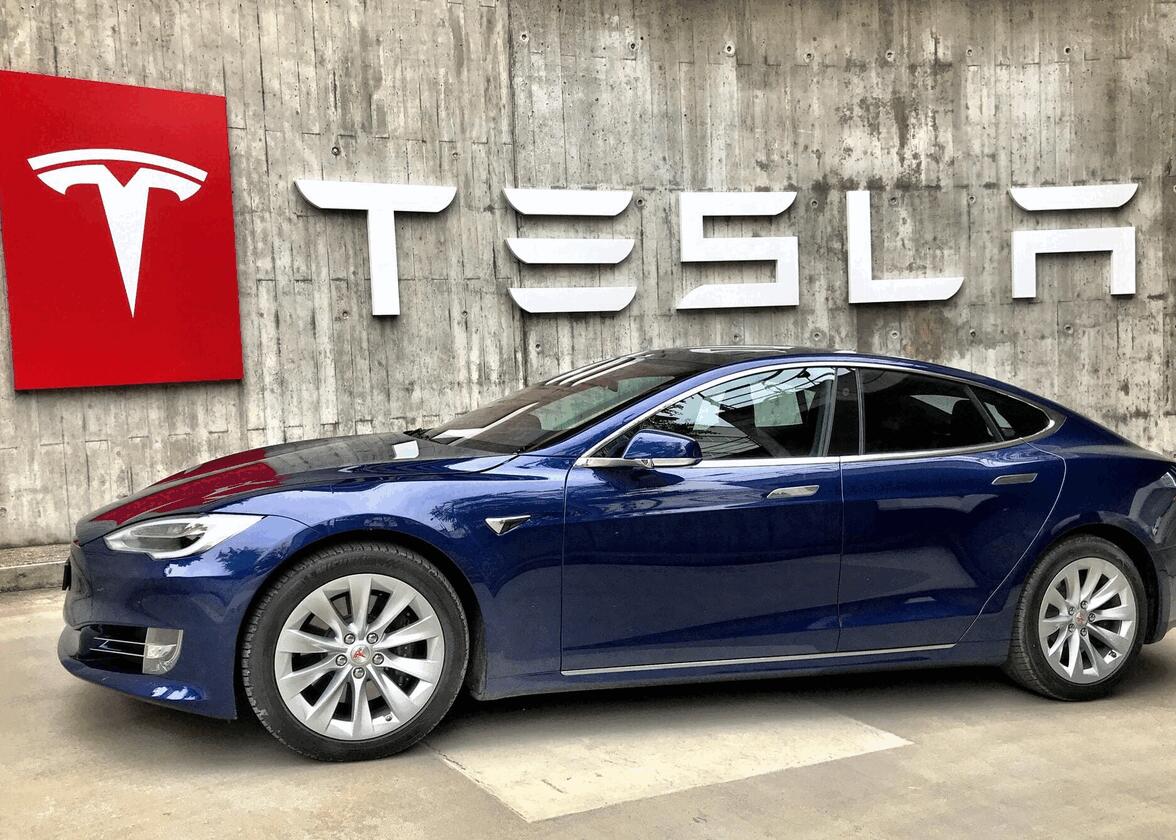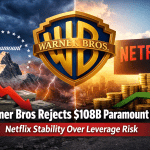Tesla Faces Investor Turmoil as Sales Slump, EV Credits Expire, and Political Distractions Mount.
Tesla just hit another speed bump — and this time, it’s not just a pothole. On Thursday, shares of the electric vehicle juggernaut plunged 9% following a grim earnings report that revealed sliding auto sales, shrinking revenues, and a murky road ahead. For investors who’ve ridden the Tesla rollercoaster for years, the latest dip feels different — more like a warning flare than a blip.
At the center of it all? A cocktail of slowing demand, rising competition, fading tax incentives, and a CEO whose political entanglements may now be colliding with Tesla’s financial future.
Sales Slump Deepens: Has Tesla’s Growth Engine Stalled?
Tesla reported a 16% drop in automotive revenue, down to $16.7 billion, and a 14% decline in global vehicle deliveries to just 384,000 units for Q2 — the second straight quarterly dip. Even total revenue fell 12% year-over-year to $22.5 billion, missing Wall Street expectations.
Tesla’s once unshakable delivery growth machine now appears to be sputtering — and fast.
The culprit? Soaring competition, especially from Chinese EV titans like BYD and XPeng, who are flooding global markets with sleek, budget-friendly models. Tesla’s long-standing edge in innovation and brand appeal may no longer be enough.
Musk Warns of 'Rough Quarters' – Tax Credit Fallout Looms
On the earnings call, Elon Musk sounded the alarm, warning investors to brace for “a few rough quarters” ahead, largely due to the expiration of the U.S. federal EV tax credit in September. The end of the $7,500 incentive is expected to dent affordability — and demand — especially for U.S. buyers already squeezed by high interest rates and economic uncertainty.
Tesla’s management had earlier predicted growth returning in 2025. Now, they’re offering no guidance at all — a decision that spooked analysts and cast doubt on whether even a modest rebound is still in the cards.
“We interpret no guidance as a signal that management is no longer forecasting volume growth,” said Morningstar’s Seth Goldstein.
Tesla Stock: Is It Time to Sell?
As of July 24, Tesla shares are trading at $303.30, down over 25% in the past six months — a staggering loss of more than $100 per share. Just over a month ago, on June 18, Tesla was at $322.05. The company’s market cap now sits below $950 billion, and its P/E ratio remains a lofty 175.81, signaling a still-premium valuation despite the downturn.
For investors, the question is becoming harder to ignore: Is it time to dump Tesla stock?
Tesla’s long-term story — AI, autonomous vehicles, and energy storage — remains promising. But the short-term picture is increasingly clouded by declining auto revenues, fading tax support, political volatility, and intensifying global competition.
Until Tesla shows clear signs of regaining delivery momentum or successfully launching its lower-cost EV, many analysts are urging caution. For some, that means holding. For others? It might be time to take profits — or cut losses.
"Tesla's disappointing results aren't surprising given the rocky road it's traveled recently," said eMarketer analyst Jacob Bourne. "A truly affordable model will hit the bullseye in terms of boosting sales if Tesla can effectively position it right without detracting from its higher-priced models." as reported by Reuters.
Elon Musk’s Politics Now Cast a Shadow Over Tesla
Beyond the balance sheet, Musk’s political alliances are drawing more scrutiny than ever. His leadership of Trump’s “Department of Government Efficiency” (DOGE) — which gutted regulatory agencies — has raised ethical questions. And his recent endorsement of Germany’s far-right AfD party is creating global reputational risk.
Most recently, Musk clashed with President Trump over a federal spending bill and declared plans to form his own political party — a move that has some investors worried Musk is distracted at a critical turning point for Tesla.
Will a Cheaper Tesla Be Enough to Reignite Sales?
Tesla’s long-promised affordable EV — a model many investors view as key to unlocking mass-market demand — has finally inched closer to reality. According to CFO Vaibhav Taneja, the company began producing initial units by the end of June, but volume production won’t ramp up until next quarter, later than previously expected.
The rollout timeline appears uncertain, and investors were left with more questions than answers. Tesla declined to reaffirm its full-year delivery guidance, citing broader macroeconomic headwinds and the delayed timeline of the new model's production ramp.
While the company says the lower-cost model could help revive sales in the back half of the year, the lack of clear targets — and the absence of detailed specs, price points, or market strategy — adds to the overall sense of uncertainty.
“Without meaningful new volume from this car in Q3, it’s hard to see how Tesla regains momentum before year-end,” one analyst remarked during the earnings call.
In the meantime, the competition isn’t waiting. Chinese automakers and European EV brands are aggressively scaling up production and offering cheaper, tech-savvy alternatives — making Tesla’s delays even more costly in terms of lost market share.
What Happens Next? A Turning Point for Tesla
With its stock down 25% year-to-date — the worst performance among tech megacaps — Tesla’s once bulletproof aura is fading. Analysts say the coming months could define the company’s future.
Key questions loom:
-
Can the affordable model spark a sales revival?
-
Will Musk’s political distractions worsen or stabilize?
-
Is Tesla morphing from a hyper-growth innovator to a legacy automaker?
Some bullish investors still believe in Tesla’s long-term AI, energy, and robotics ambitions. But with short-term headwinds mounting, the EV leader may have to prove — once again — that it's more than just Elon Musk’s megaphone.
Tesla Share Price FAQ's
Is Tesla stock expected to recover in 2025?
That depends on the success of its new affordable EV, the impact of tax credit expirations, and whether Musk can keep investor focus on Tesla's core business.
Why are Tesla’s sales declining?
Rising competition (especially from China), slowing global EV demand, and fewer government incentives are all contributing to the downturn.
What is Elon Musk’s role in Tesla’s decline?
His political involvement, controversial endorsements, and focus on external ventures are causing investor concern about Tesla’s leadership stability.
Will Tesla release a cheaper EV in 2025?
Tesla says limited production started in June and mass production will ramp up later this year, but no clear timeline or specs have been confirmed publicly.
What celebrities drive Teslas?
Many high-profile celebrities drive Teslas, often choosing them for their performance, sustainability, and status appeal. Leonardo DiCaprio has been spotted in both a Model S and a Roadster, reflecting his environmental advocacy.
Robert Downey Jr., known for his tech-forward persona, also drives a Roadster. Music power couple Jay-Z and Beyoncé have both been seen in Tesla SUVs, while actors like Ben Affleck, Natalie Portman, and Emma Watson favor the Model S and Model 3. In the music world, Travis Scott and Pharrell Williams have made headlines for receiving early access to the Tesla Cybertruck. Even talk show hosts and car collectors like Jay Leno frequently feature Teslas in their personal garages. These endorsements underscore Tesla’s strong cultural influence among the elite.
Footnotes & Related Reading:
If you're following the broader market, don’t miss our recent deep dive into Nvidia CEO Jensen Huang’s surprising stock sale and the rise of a new AI competitor that’s shaking up the tech world. We’re also tracking reports that Donald Trump may be planning to gatecrash Nvidia’s dominance, signaling fresh political drama in Silicon Valley. For those curious about big money moves, check out our latest rankings of the Top 100 Richest People in the World, the Richest Reality Stars of 2025, and our growing archive of in-depth celebrity net worth profiles covering everyone from Taylor Swift to Elon Musk.














